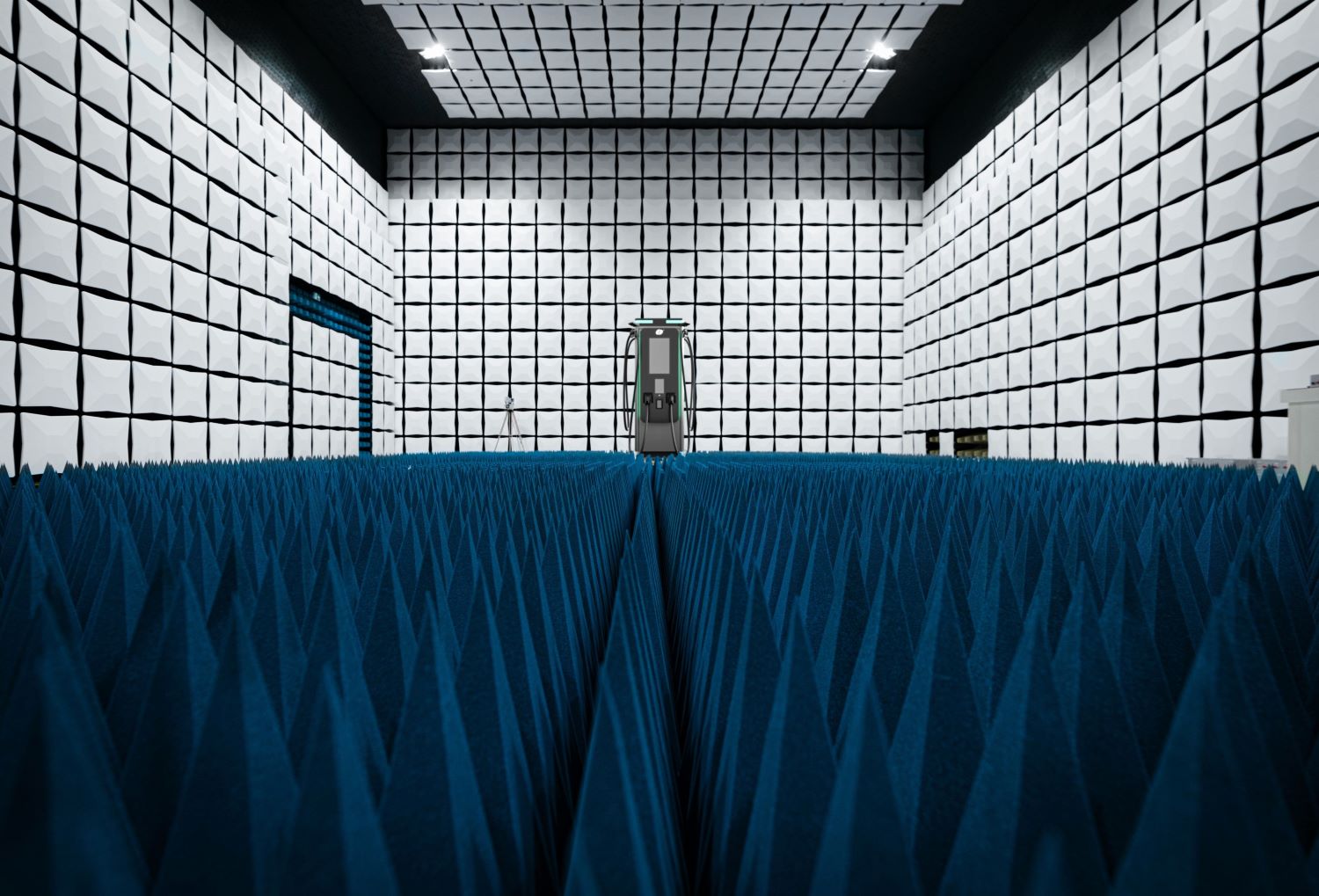Have you ever wondered what stages a charger goes through before you can use it to power up your electric vehicle at a parking lot, charging hub, or favorite restaurant? The journey from concept to a ready product is a long one—often taking several years. Today, we will take you through one of the most crucial phases of this journey: what happens to a prototype before it enters mass production.
Every new charger undergoes a rigorous full-cycle testing process in our laboratories before being introduced to the market. Here, we verify its quality, safety, and compliance with product standards as well as the declared technical specifications. At Ekoenergetyka, we have unique research and testing facilities that allow us to comprehensively evaluate our products, ensuring the highest quality while meeting market and customer demands.
8 stages of testing: how we verify our prototypes
1. Environmental testing – extreme operating conditions
The first step is placing the prototype in a climate chamber, where it is exposed to extreme temperatures ranging from -35°C to +55°C. We check whether the device can not only operate under these conditions but also maintain its declared parameters. We conduct short-term tests (24-hour cycles) as well as long-term assessments that last up to 24 days in high temperatures and humidity, simulating the impact of environmental factors during prolonged station operation.
Our all-in-one bestseller, Axon Easy, is reliable in all weather conditions—from -35°C to +55°C—confirmed by extensive testing. This makes it one of the best products in its class, meeting the expectations of even the most demanding customers.
2. Safety testing – protecting users and equipment
We test electrical insulation, surge resistance, and continuity of protective conductors. Our safety assessments align with current European standards, and we proactively prepare for upcoming regulatory changes to ensure our products always meet the highest requirements.
3. IP and IK protection testing – resistance to water, dust, and mechanical damage
Does our housing effectively protect the charger’s internal components from moisture, dust, and vandalism? We test its resistance to water (IP rating) and mechanical impacts (IK rating) using pendulum hammers and water ingress tests.
The Axon Easy product line and the split solution SAT400 + Axon Side 360 DLBS have an IP54 and IK10 rating. This means they offer high resistance to water and dust as well as enhanced protection against vandalism. As a result, users can be confident that these devices will operate reliably even in harsh outdoor environments.
4. Aging tests – the test of time
Materials and components used in or mounted on the charger’s housing undergo accelerated aging tests. These simulate years of exposure to UV radiation, high temperatures, and humidity. If any component does not meet our standards, it is sent back to the design team for further improvements.
5. Functional & electrical testing – ensuring stability
At this stage, we verify all key electrical parameters, including voltage, current, power, efficiency, and response to varying power supply conditions. By using electronic loads, we simulate different operational scenarios without the need to connect actual vehicles.
A prime example of our technological advantage, backed by rigorous testing, is the Axon Easy. Available in 240 kW, 320 kW, and 400 kW versions, it consistently delivers a charging current of 500A. This ensures stability and reliability even under intense use.
6. Electromagnetic compatibility (EMC) testing
Our EMC chamber is the largest standard EMC chamber available on the market, equipped to be one of the best testing laboratories of its kind in Europe. We can test devices with power ratings of several hundred kW and currents up to 800 A, ensuring that our chargers do not interfere with other devices and fully comply with international standards.
Every charger must function reliably in an electromagnetic environment filled with potential interferences—from mobile phones to vehicle control systems. We test both emission of electromagnetic disturbances and resistance to external interference to guarantee stable operation in all conditions.
All our EMC tests aim to achieve Class A compliance, and in some cases, the even stricter Class B certification. We have successfully obtained Class A compliance for Axon Easy 180 kW and 400 kW, as well as for Axon Side and satellite chargers SAT 400 and SAT 600.
7. Acoustic testing – silence matters
Charging stations operate in various locations, including public spaces and residential areas. In our acoustic chamber, we measure noise levels and identify their sources, allowing us to optimize fan and cooling system designs as needed.
Acoustic test results:
Axon Easy – noise level below 60 dBA
8. Corrosion resistance testing – long-lasting durability
Thanks to salt fog chambers and corrosion tests, we examine how the materials used in our chargers withstand exposure to extreme environmental conditions. This is particularly crucial in coastal areas, where salt in the air accelerates corrosion.
Why do we do this?
With our in-house testing facilities, we not only maintain full control over the quality and safety of our products but also significantly shorten the certification process and time-to-market for new technologies. If we relied on external laboratories, obtaining certification for a new charger could take up to 2-3 years and result in significant costs.
At Ekoenergetyka, we believe that only full control over the testing process ensures the highest product quality. This is why our laboratories are one of our greatest assets. Thanks to them, you can be sure that every charging station you use has undergone extensive, rigorous testing and is ready for any scenario.
Want to see our testing in action?
Step behind the scenes of our laboratories in the video below and discover how we ensure our charging stations are reliable, safe, and future-ready!
